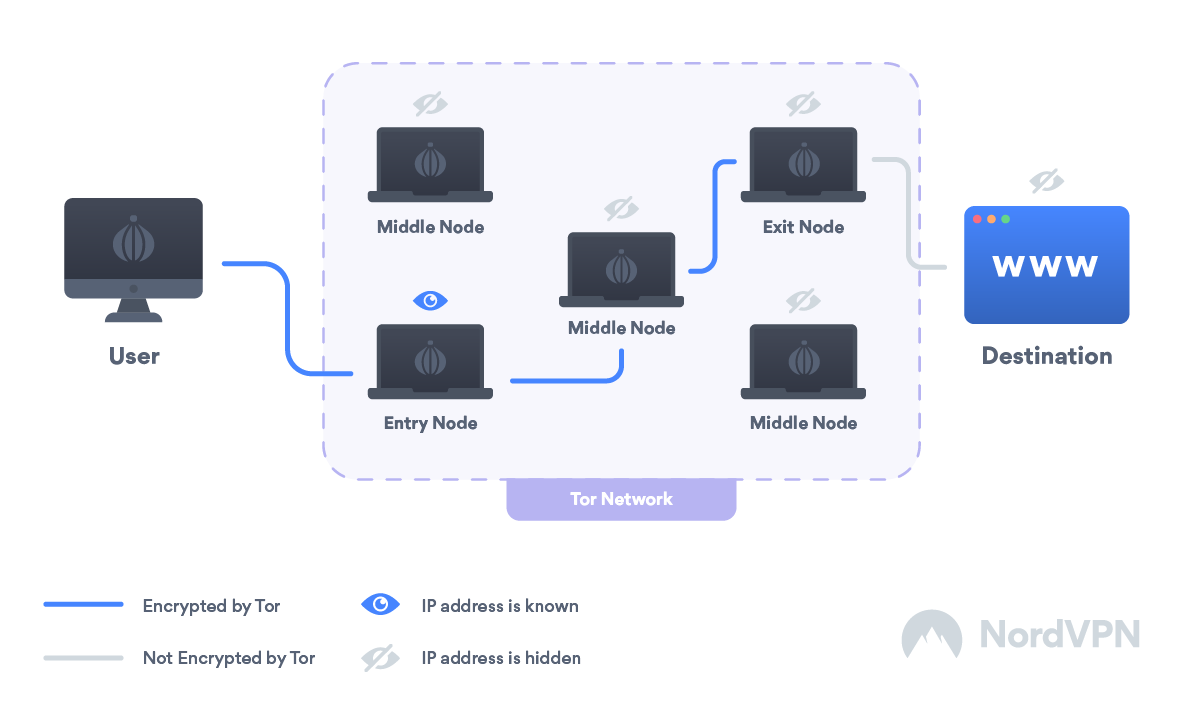
However, this setup would be incredibly slow (much slower than Tor already is) and hard to set up, so much so that it'd be sort of pointless. VPN 1 decrypts the traffic for the final time and sends it to the end user The traffic passes back through the Tor network, spitting out a chunk of encrypted data through the entry node to VPN 1

VPN 2 encrypts the traffic, passes it to the exit node The web server sends the traffic back to VPN 2 VPN 2 decrypts the data for the last time, then passes it to its final destination The exit node decrypts the traffic the way it was designed, spitting out a chunk of still-encrypted data to VPN 2 Traffic passes through the Tor network (you can find more about the process of encryption used here on Wikipedia's Tor article I believe) VPN 1 decrypts its layer of the traffic, sends it to the Tor entry node User sends this encrypted-to-shit garbage to VPN 1

User encrypts traffic one more time to be decrypted by VPN 1 User encrypts traffic further for entry to the Tor network User encrypts the traffic to be decrypted by VPN 2 User has request prepared - for instance, a GET request to a web server


 0 kommentar(er)
0 kommentar(er)
